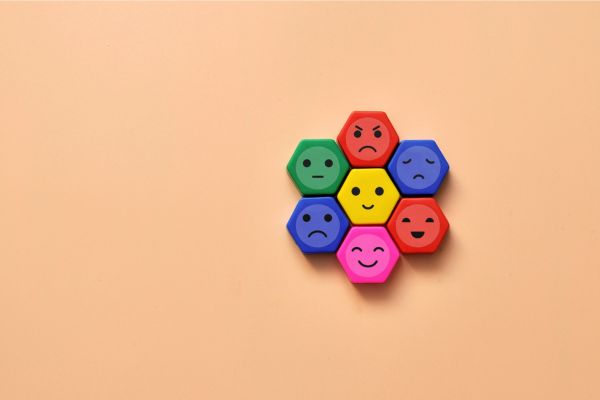Insights
INSIGHTS
All Topics
My Account
Top tips for charities using Canva
10 Feb 2021by Christine Chiu
We offer guidance to charity professionals using the graphic design platform
Improving your content doesn’t need to be complicated. Creating beautiful media can be straightforward with graphic design platforms. Many such platforms are now online, making them easily accessible without the need to download or pay subscription costs.
Perfect for charities designing in-house content, Canva has plenty of innovative tools for digital marketing projects. You can also find a free ‘Canva for Work’ option for up to ten users on the Charity Digital Exchange.
To help you get started with Canva, we run you through the basics. Here are our top tips on how to use the graphic design platform.
Designing content from templates
Templates offer benefits for charities looking to update content quickly and accurately. Dispelling design myths, templates can actually offer more flexibility. Templates are consistent and changeable, so anyone can update them. They also provide charities with harmony in terms of design.
Canva’s easy-to-use templates are great for individual or team marketing projects. Here’s where to start:
Selecting your template
You might have a specific social media outlet in mind. Canva has specialised templates for the major social media platforms. These include Instagram stories and posts, Facebook posts and covers, YouTube channel art, and LinkedIn banners. Once chosen, artists can start to customise the pre-sized template.
Customising the content
Once you have selected your template, it will appear on your main Canva window. A menu appears on the left-hand side with customisation options. From the main window, users can easily amend the text, upload photos, add stock images and icons, play with text, and include jingles. For compelling templates, add videos to create the polished look.
Refining your message
The Canva platform is a powerful tool for editing templates. Using the same template, additional pages can be added if your message is longer than a single ‘page’.
Uploaded and stock images can be edited directly from the template. Options to customise include filters, adjustments, cropping, flipping, animation, and positioning. Once you’ve finalised your objects or photos, you can ‘lock’ the photo to prevent any accidental editing goofs.
Publishing content for team members
Bearing in mind that content creation is a team effort, Canva allows teams to share the job. Each template has a version history that can be checked or reverted to.The benefit is that individuals can work on previous versions or move forward with the current draft. Worked on templates can also be downloaded for individual use.
Creating your own charity templates is also possible on Canva. On the main window, click on the three dots. Using the key word search, type in ‘Template’. Once saved, others can go on to customise your creation. For non-paying subscribers, teamwork is just as simple as creating a link to the project and sharing.
Creating designs from your own ideas
For charities with in-house creative minds, Canva also has the option to produce content from scratch. This process involves more complexity than templates, but can help charities achieve an authentic and customised look.
Choose the basic components to your media
Canva recommends that designers consider the size, colour, and shape of the post. These basic properties include deciding where the content will be published. Social media posts can be customised by size and number of pixels.
Choosing background colour, texture and photos comes next. Remember, the focus should be on the foreground and content. Balancing the background with your message important. The background should support the message or feature image.
Adding text, icons, and other elements
Similar to the process involved in customising templates, text, icons, and feature images are added after the basic components.
To create an original look, charity marketing teams can add photos from their files. Highlighting previous virtual fundraising events and experiences adds impact. Canva’s filters can also be layered on to stock or owned images.
Using Canva for bespoke creative designs has a lot of advantages. Pre-set fonts, icons, stock images, and videos can still be added to your creation. Using the left-hand side menu, creatives can add shapes, frames, icons, and simple drawings. All of these widgets can be dragged and dropped into the new design.
Design considerations
When designing content, Buffer recommends 11 design principle to maximise social media posts. When creating from scratch, colour and balance matter. Buffer says that colours dictate moods and feelings. People make snap judgements just by glancing at the digital post.
Both Buffer and Canva emphasise the design importance of balance. Balance is achieved in an image when lines and objects are evenly distributed across the space, or create a sense of harmony.
The hierarchy of text also matters. By scaling and changing fonts, designers can focus on what’s the most important image or message coming across.
In conclusion
Ultimately for digital marketing teams, Canva offers a wide range of options for users of all abilities. For those on a shoe-string budget, the free subscription programme already offers a lot of choice.
More on this topic
18 Feb 2025by Ioan Marc Jones
Training to help your charity embrace the future
Recommended Products
18 Feb 2025by Ioan Marc Jones
Training to help your charity embrace the future
Our Events
Charity Digital Academy
Our courses aim, in just three hours, to enhance soft skills and hard skills, boost your knowledge of finance and artificial intelligence, and supercharge your digital capabilities. Check out some of the incredible options by clicking here.















